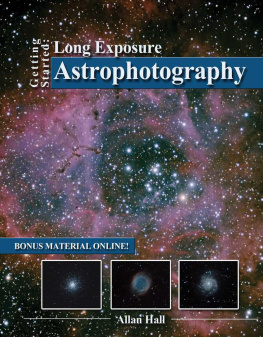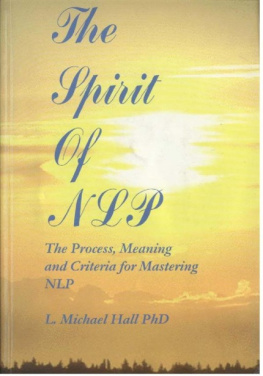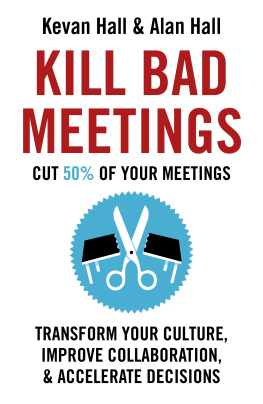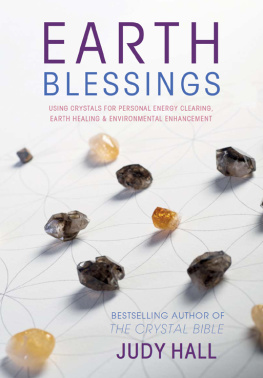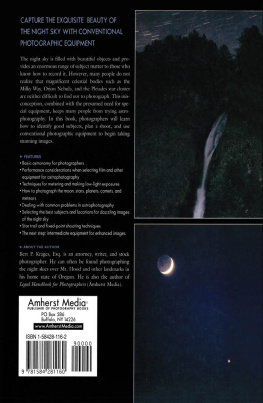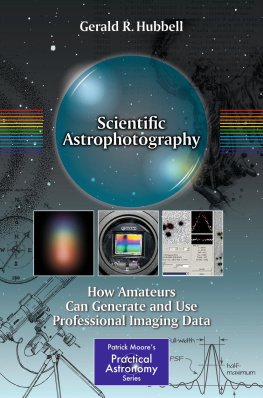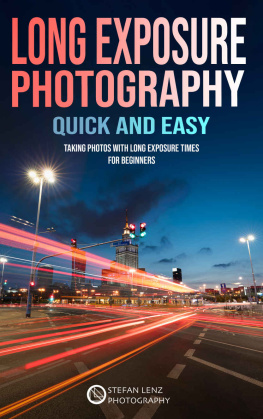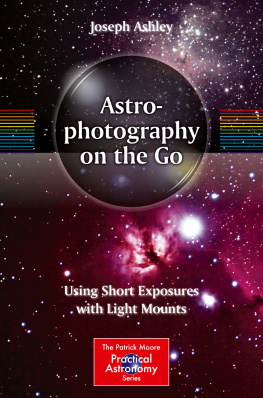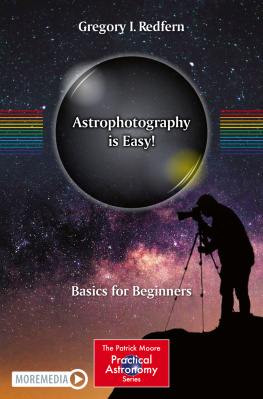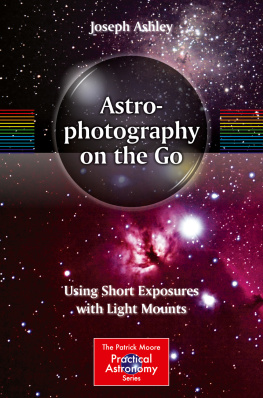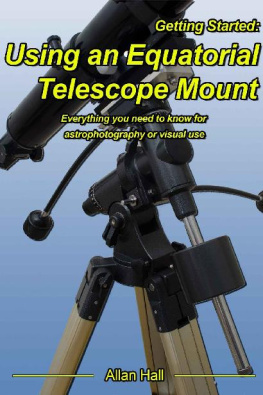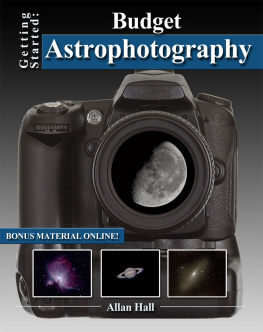Hall - Getting started : long exposure astrophotography
Here you can read online Hall - Getting started : long exposure astrophotography full text of the book (entire story) in english for free. Download pdf and epub, get meaning, cover and reviews about this ebook. City: Huntsville, Tex, year: 2013, publisher: CreateSpace Independent Publishing Platform;Allan Hall, genre: Home and family. Description of the work, (preface) as well as reviews are available. Best literature library LitArk.com created for fans of good reading and offers a wide selection of genres:
Romance novel
Science fiction
Adventure
Detective
Science
History
Home and family
Prose
Art
Politics
Computer
Non-fiction
Religion
Business
Children
Humor
Choose a favorite category and find really read worthwhile books. Enjoy immersion in the world of imagination, feel the emotions of the characters or learn something new for yourself, make an fascinating discovery.
- Book:Getting started : long exposure astrophotography
- Author:
- Publisher:CreateSpace Independent Publishing Platform;Allan Hall
- Genre:
- Year:2013
- City:Huntsville, Tex
- Rating:3 / 5
- Favourites:Add to favourites
- Your mark:
Getting started : long exposure astrophotography: summary, description and annotation
We offer to read an annotation, description, summary or preface (depends on what the author of the book "Getting started : long exposure astrophotography" wrote himself). If you haven't found the necessary information about the book — write in the comments, we will try to find it.
Leading up to an incredibly useful list of the first twenty-five objects anastrophotographer might image with long exposures, this Getting Started title also offers a range of equipment advice and grounded descriptions of why certain phenomenon occur - as well as what they will mean foryou and your shoots.
Though founded in the clarity and precision of science and photography, astrophotography can nonetheless be one of the most artistic and even sensual crafts, as well as one of the most daunting. A road map is essential when pursuing a rich experience imaging and cataloguing the night sky. Getting Started: Long Exposure Astrophotography, with over 200 illustrations, images, charts and graphs bolstering its clear and instructive text, takes readers from practical equipment purchases, savvy preparations, andunderstanding of heavenly bodies, with the proper - and smart - ways tocapture their expansive sight, intimate motion, and breathtakingportraitry.
From purchasing your first astrophotography telescope, hooking up yourcamera, taking long exposure images, and finally processing thatfinished image, this book is rich with provisions and tips. Hallexpertly balances his own procedures with general and inclusive guidesfrom set-up to software recommendations.
So, if you have ever wanted to take photographs of glowing nebulae, spiralgalaxies and shimmering star clusters, this is the reference you want on your desk as well as with you out under the sky.
A journey begins, with Hall exploring in-depth details of field rotationand focusing methods, as well as explaining not just the what and how,but the ever important why. So you wont just follow instructions for multiple image stacking, youll understand the effect and craft ofit. And the descriptions of atmospheric phenomenon affecting imagingwont end there, but lead you to experiments in which you can observeand understand.
For todays astrophotographers, access is key. Encouragingly, there is more than ever in many ways. From the quality of equipment that you canpurchase to the ready availability of software and meteorologicalinformation, its a photographers dream in many ways. Let thisunprecedented scenario work for you, whether youre looking to take your first photos or enhance your development as a long-exposure cosmiccurator.
From start to finish, Allan Halls Getting Started: Long Exposure Astrophotography book is your comprehensive resource, taking you from entrance toexpertise in the rewarding field of astrophotography - with a focus onthe long exposure element that makes for such memorable, lifelong pieces of photography.
Hall: author's other books
Who wrote Getting started : long exposure astrophotography? Find out the surname, the name of the author of the book and a list of all author's works by series.

